Crew 186 Mission Plan, 12/01/2017
Boilers2Mars
Crew
Commander: Max Fagin (USA)
Executive Officer: Kshitij Mall (India)
Crew Engineer: Melanie Grande (USA)
Crew Geologist: Cesare Guariniello (Italy)
Journalist: Justin Mansell (Canada)
GreenHab Officer: Mark Gee (USA)
Health and Safety Officer: Samuel Albert (USA)
Boilers2Mars is a crew composed of all students an alumni from Purdue University in West Lafayette, Indiana. With backgrounds in aerospace engineering, life sciences, planetary science and agricultural engineering, several research projects are scheduled, the contents and goals of which are as follows. Further information on each research project can be found in the Preliminary Research Information forms.
Topic: Spectroscopic / Thermal Analysis to Identify Physical Properties of Materials for Advanced ISRU and in-situ testing of tools for collection
Discipline: Geology
Researcher: Cesare Guariniello
Research Question: Can the use of remote sensing performed by astronauts in various locations to support advanced In-Situ Resource Utilization (ISRU)? Can these properties be used to determine the best collection tools (rock hammer, trowel, spoons) to be used for each type of material? This project has the goal of identifying the richest source areas, and give information about the best techniques to collect and process the material.
Experimental Procedure: The Geology research project for crew 186 will test the use of remote sensing to support In-Situ Resource Utilization (ISRU). The research has the goal to demonstrate the use of remote sensing not only for mineralogy, but to infer some of the physical properties of the materials, and to guide the process of selection of appropriate excavation tools and techniques. The crew will perform the following steps:
- Use a VNIR portable spectrometer to study the mineralogy and identify useful materials for ISRU. The spectrometer has a range of 350-2500 um, resolution 1 um, and has been provided by courtesy of Dr. Briony Horgan’s remote sensing laboratory at Purdue’s Department of Earth, Atmospheric, and Planetary Sciences
- Visit locations with abundance of ISRU materials which are found on Mars: clays (illite, chlorite, kaolinite), salts (gypsum, sulfates), hematite
- Collect measurements of air and rock temperature and rock albedo and use them to infer thermal inertia (this can be done as post-processing. The reason to use such a complex process is because a thermal camera did not arrive in time). Thermal inertia can be used to give a first-order estimate of the particle size and cohesiveness of the material
- Some of the locations will be visited twice, to test the efficacy of simple collection tools, i.e. a rock hammer, a trowel, and a spoon, and confirm the results given by remote sensing analysis about the abundance and physical properties of the material
Topic: Implementing ISS Microbial Monitoring Protocol at MDRS Using qPCR Technology
Discipline: Life Sciences
Researcher: Sam Albert
Research Question: Will the bacterial environment on the Mars Desert Research Station (MDRS)
significantly differ from the results obtained on the International Space Station (ISS)? How has the quasi-isolated environment of the MDRS affected microbial growth?
Experimental Procedure: Each Sol, samples will be collected from a variety of locations within the MDRS Hab. The experiment will focus on surface samples, but samples will also be collected from potable water and plants growing in the GreenHab when possible. Every sample will be analyzed for the presence of a variety of pathogens and other bacteria, and the data recorded for post-mission analysis. The data will be compared directly to data from ISS and Mir studies whenever possible, as well as to a control study performed at Purdue in unconfined public spaces (such as the aerospace computer lab, which likely has its own special pathogens). As much as possible, the protocol currently
in use on the ISS for real-time microbial detection will be imitated in order to align results. In particular, see the study by Ichijo et. al cited below.
Topic: EVA Navigation in Low Visibility Conditions Using Radio Direction Finding
Discipline: Human Factors
Researcher: Justin Mansel
Research Question: Is radio direction finding an effective means of low visibility navigation during EVAs on Mars? What are the challenges of this type of navigation and what improvements may make it better suited to a Mars mission?
Experiment Procedure: During each EVA, the crew will obscure the upper half of their visibility to limit their field of view to only their immediate area. One person on each EVA will have an unobstructed field of view and ensure the safety of their crewmates (e.g. preventing them from wandering off a cliff). The experiment subject rides in a rover with their eyes closed. After being transported 2-3 km away from the habitat in a direction they have not been told, the crew member then uses the yagi antenna to establish a bearing on a radio beacon in the hab and being to walk back. Their GPS track will be monitored, but they will not have access to it during the experiment. Over the course of 3-5 EVAs of increasing complexity will be performed to assess the effectiveness of the navigation technique.
Topic: Conditioning of a Martian Crew Using Yoga and Meditation
Discipline: Human Factors
Researcher: Kshitij Mall
Research Question: Yoga comprises of many postures or “asanas” that have positive effects on cardiovascular, digestive, neurological systems and so on. Yoga includes breathing exercises, small body exercises and asanas that improve physiology of the crew. Meditation, on the other hand, builds focus and helps reduce stress. The idea is to use Yoga asanas and meditation during the proposed crewed mission and study their impact on the crew’s stress levels. The crew stress would be measured through subjective questionnaire at the start of the mission and at the end of the mission.
Experiment Procedure: The procedure is as follows.
- The crew submits two subjective surveys on Perspective Stress Analysis and Self Analysis Survey based on previous month’s experiences related to stress.
- The crew then performs Yoga and meditation for 30 minutes each SOL.
- The crew fills out the Perspective Stress Analysis and Self Analysis surveys again.
- The overall impact of Yoga and meditation of a Martian Crew for a 15-day analog mission is then evaluated.
Topic: Growth of Microgreens in Conditions of Simulated Martian Habitat
Discipline: Agriculture
Researcher: Mark Gee
Research Question: How well do radish microgreens grow in different growth substrates? How well will microgreens grow when removed from the context of their native microbiome? If the microgreens are colonized by microbes from the astronauts, will there be an additional effect on plant growth?
Experimental Procedure: Radish microgreens will be grown in five treatments: Potting soil, arcilite, no soil, no soil with soil bacteria innocculum, no soil with astronaut innocculum.
Topic: Application of VR for On-Site Crew Training and its Implications for Crew Autonomy
Discipline: Human Factors
Researcher: Melanie Grande
Research Question: My research will provide VR training opportunities during the MDRS mission simulation to compare to in-person pre-mission training. It will analyze the efficiency of the crew in performing the operations, including those for maintenance, repair, or emergency procedures. The research will especially explore the impact of VR training opportunities for autonomous schedules compared with detailed daily astronaut schedules.
Experiment Procedure: Two training modules have been developed for Crew 186, including an EVA module, “EVA-01, Geology in the Field”, and a maintenance module, “MNT-01, ATV Maintenance: Brakes System”. The EVA-01 module developed is named “Geology in the Field,” and its purpose is to teach the crew some geology basics and how to use and care for a portable mass spectrometer. The MNT-01 module developed is named “ATV Maintenance: Brakes,” and its purpose is to familiarize the crew with the brake system and standard maintenance checks for the brake system.
Prior to the mission, three participants (half the members of the crew) were selected for pre-mission training. These participants were scheduled to receive a PowerPoint version of the training modules during a designated time together, and each was allowed to ask questions, converse, and take notes based on personal preference. The other half of the crew, a further three participants, will receive in-the-field VR training immediately prior to completing a task. This crew will be allowed to choose a time at their discretion (though on a designated day), but they will do the training individually without the ability to discuss with the investigator (myself) or other participants. Each participant will be scheduled for a maintenance EVA and a geology EVA, in order to complete the tasks described by each module. During their participation in sim, their performance, familiarity, comfort, etc. will be analyzed. Surveys will be used for further data, self-reported, following the tasks’ completion. This data will hopefully answer the questions regarding the efficacy of VR training in the field and the potential of crew autonomy.


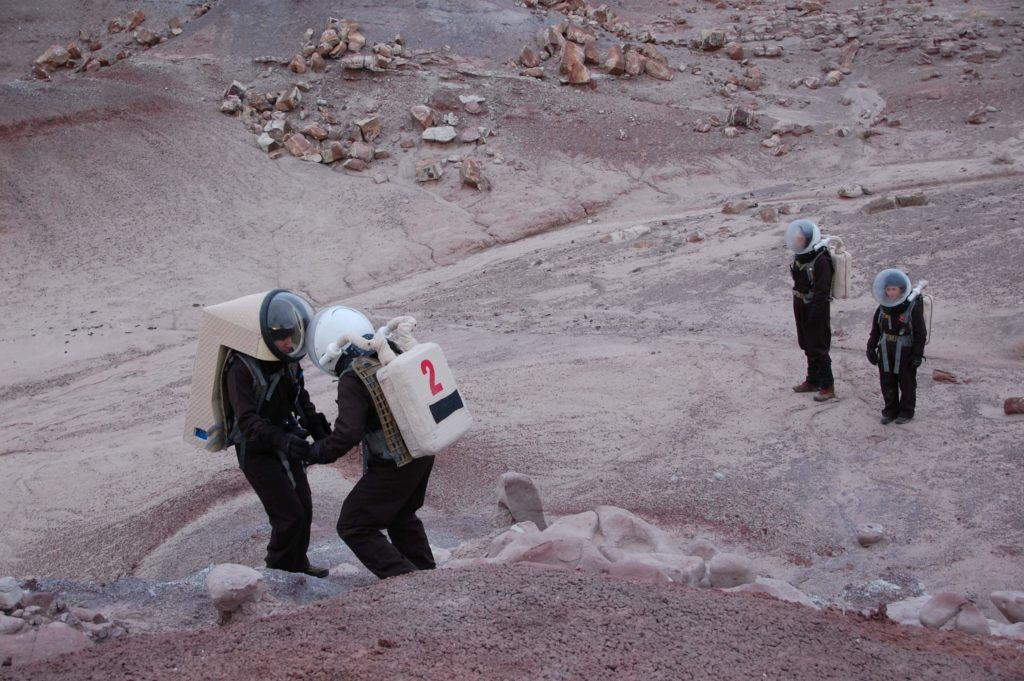

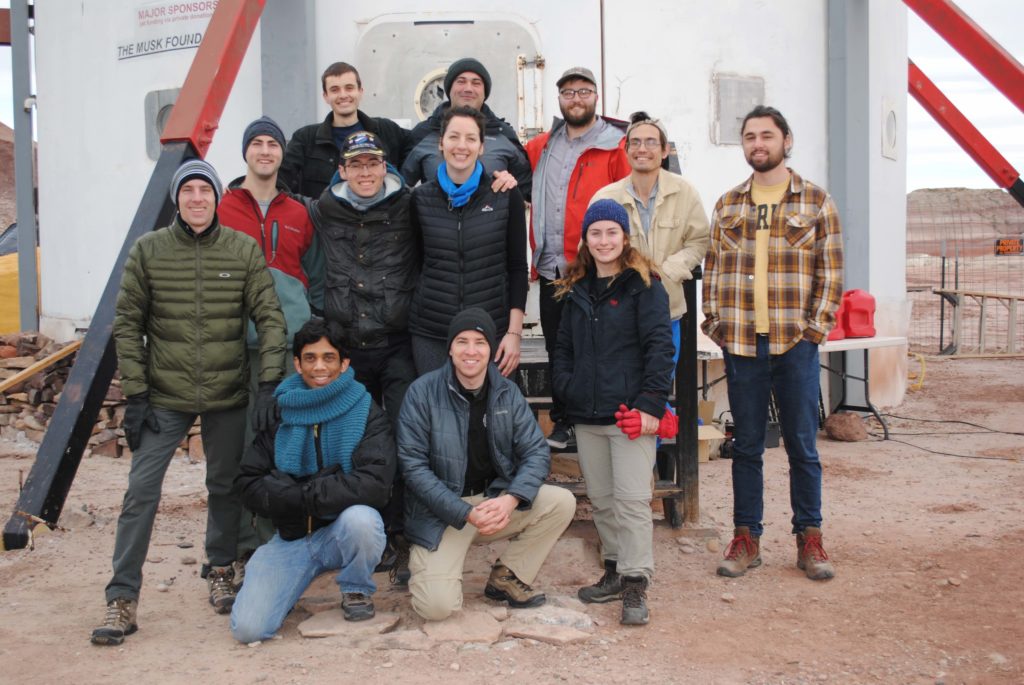
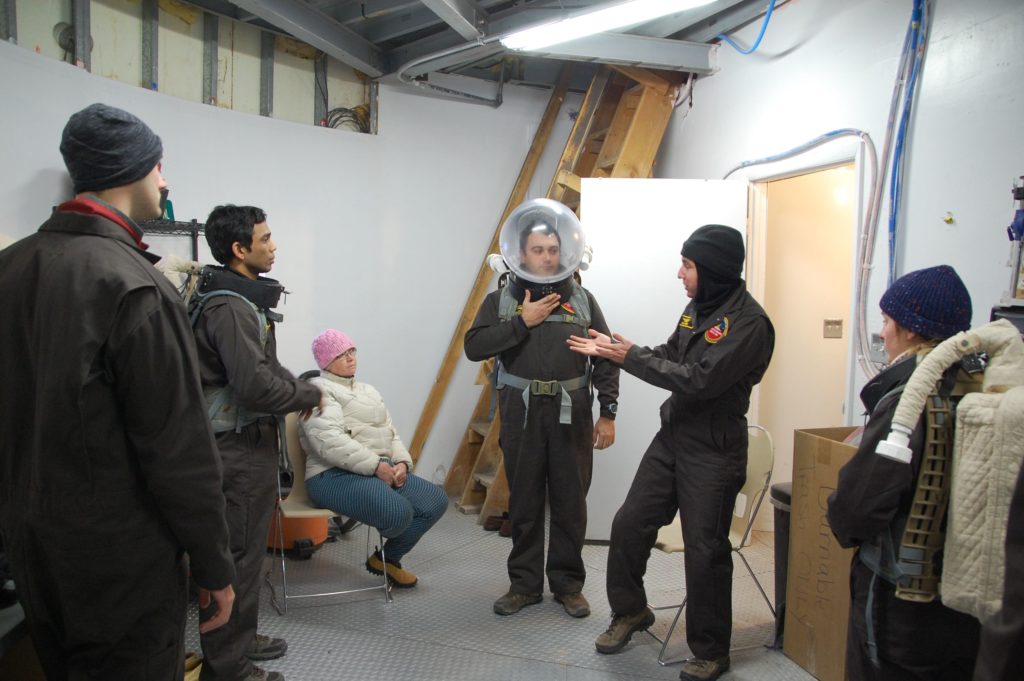
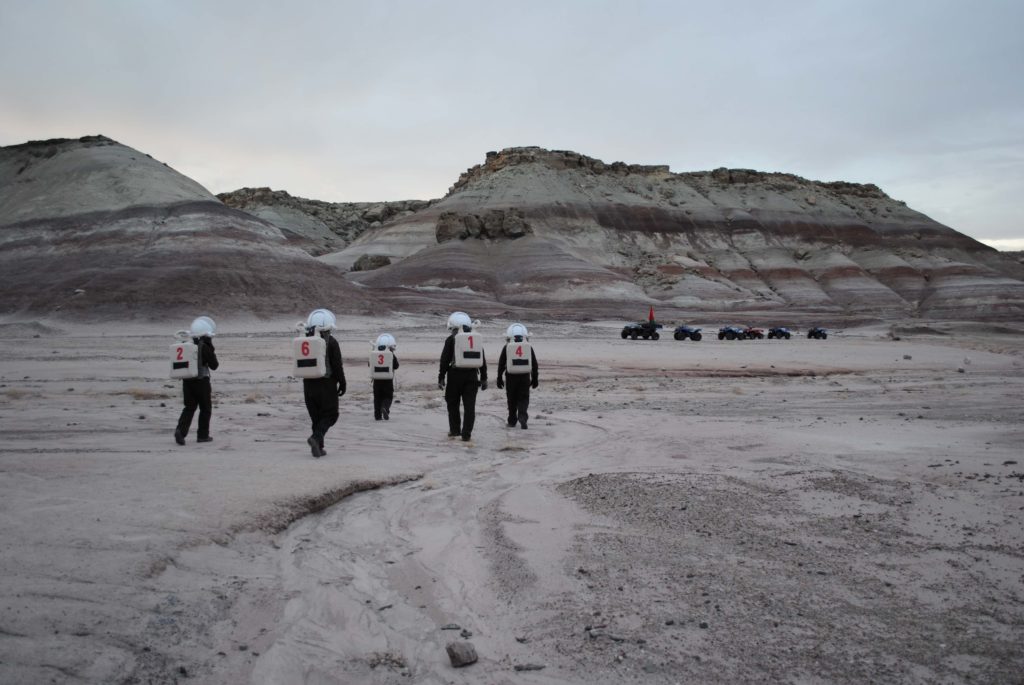
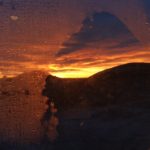

You must be logged in to post a comment.